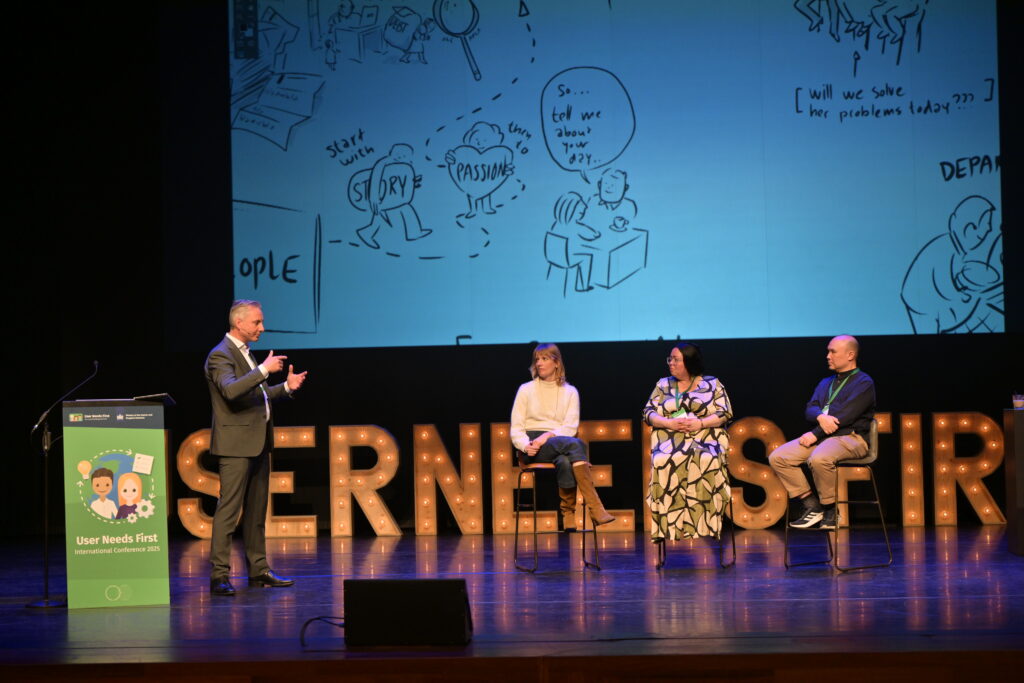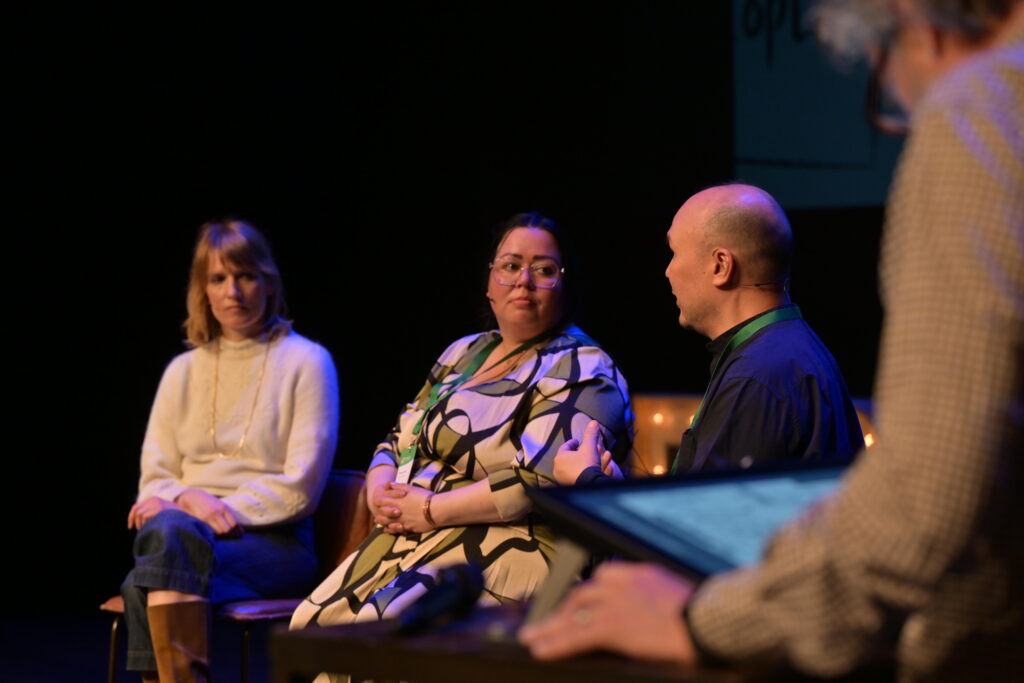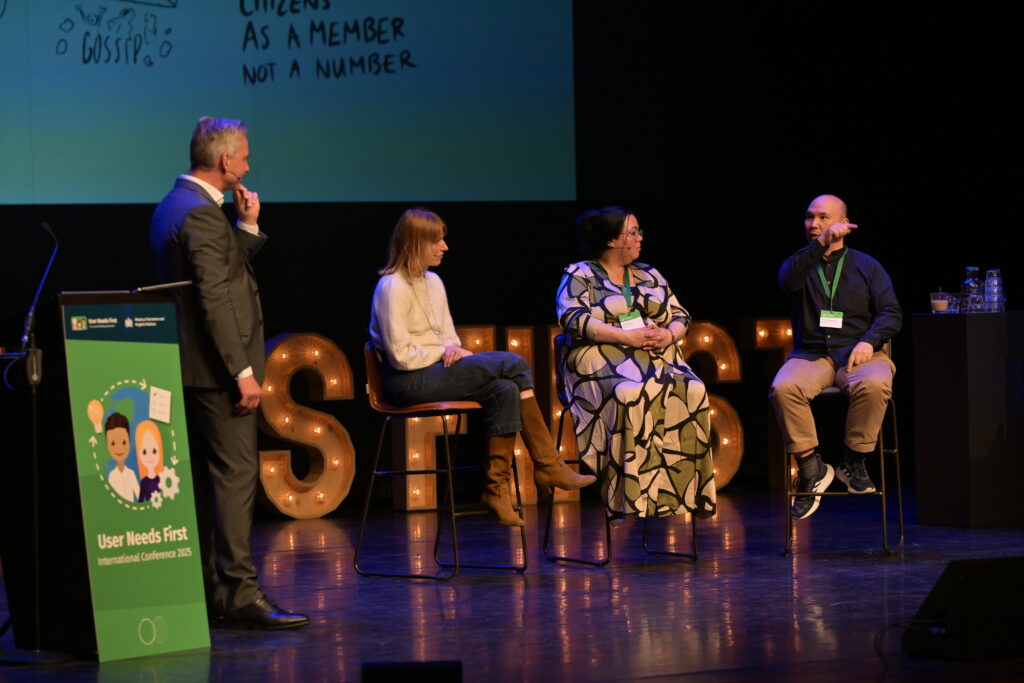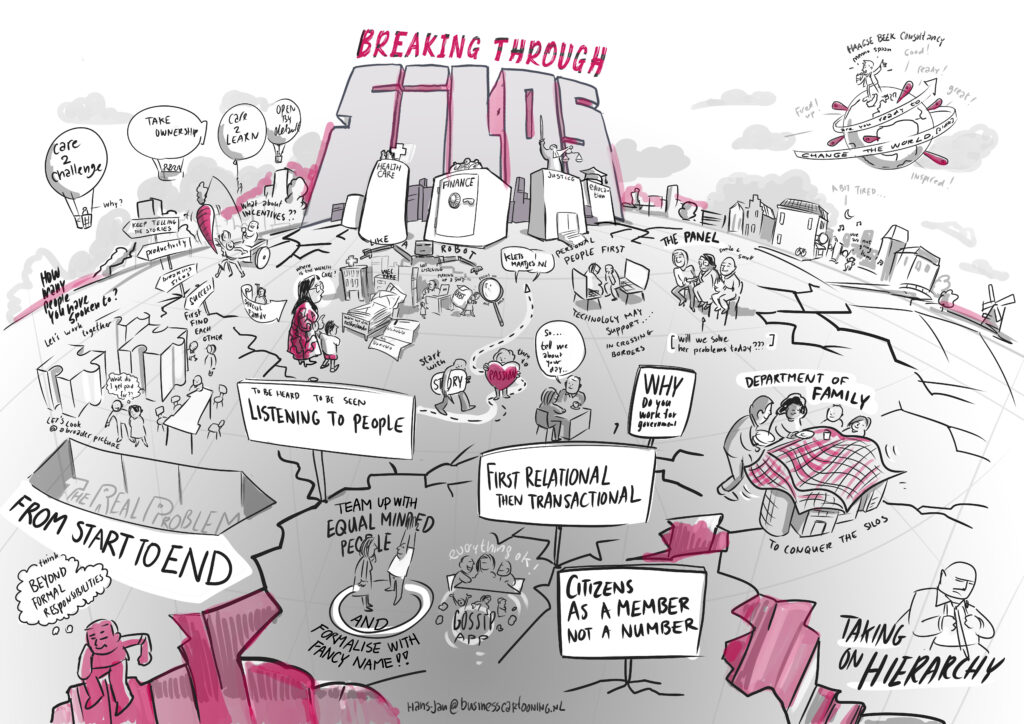From silos to service: 15 lessons for better government cooperation
At the User Needs First International Conference 2025 in Amsterdam, the panel discussion ‘Cooperation across Government: How to Escape the Silos?’ brought together diverse voices and powerful personal stories to explore one of the public sector’s most pressing challenges: breaking through organizational silos.
Government silos – where agencies, departments, or ministries operate independently – can prevent citizens from receiving the integrated, human-centered support they need. During this interactive discussion, moderated by innovation facilitator Menno Spaan (director of Consultancy Haagse Beek), panelists and audience worked together to identify concrete ways to overcome this fragmentation.

From personal struggles to systemic change
One of the most powerful moments of the discussion came from panelist Shanna de Freitas, sharing her personal experience upon returning from the Antilles to the Netherlands at age 27 with her son. Expecting support and an opportunity to build a new life, she instead encountered a complex and unhelpful system. Having grown up in Aruba where mail delivery was unreliable, she was unprepared for the volume and complexity of official mail in the Netherlands. Despite her background as a legal secretary, she found the language in the letters difficult to understand and was unaware of mandatory requirements like healthcare insurance.
This snowballed into years of debt and emotional strain. “I felt like I was being treated like a criminal,” she said, recalling how the system focused on checking boxes and assigning blame, rather than understanding her situation. Her story reflected the painful consequences of siloed, transactional public services that fail to see the whole person.
Shanna’s experience, though deeply personal, resonated widely in the room. It provided a visceral reminder of why systemic change matters – and what’s at stake when governments fail to collaborate.
Voices from around the world
Shanna was joined by 2 international panelists who brought their own perspectives on cross-government collaboration.
Jett Pisate Virangkabutra, lecturer at School of Global Studies, Thammasat University in Thailand and former head of a public sector innovation department, emphasized the need to work within – rather than against – hierarchical structures. He shared how human-centered approaches can shift the culture from within.
Charlotte Vorbeck, a principal UX designer for the German government, highlighted the complexity of collaboration in systems where responsibility is fragmented. Having worked in startups before joining government, she was surprised at how challenging change can be in the public sector. In Germany, she noted, the fear of making mistakes often stifles innovation and openness.

From transactional to relational
The session identified several recurring problems across governments:
- Services often treat citizens as cases, not people.
- Government staff may act like rule-bound “robots” rather than empathetic listeners.
- Departments work in isolation, focusing on narrow tasks rather than shared outcomes.
- Structures and incentives prioritize compliance over collaboration or care.
- There’s a reluctance to show unfinished work or challenge the status quo.
- Citizens often fall through the cracks due to a lack of integration between services.
But the panel didn’t stop at identifying what’s broken, they also proposed clear ways forward.
15 key ingredients for breaking down silos
Together, the panel and participants developed a rich set of strategies to enable more human-centered and collaborative public services:
- Put the citizen first: Design services around real people, not just rules or processes. Broad entrance points, where people can come with any kind of question or issue, help ensure their story is the starting point.
- Start with empathy: A simple question like “Tell me about your day” can open up understanding and trust. Services should listen deeply and see the person behind the problem, not just the paperwork.
- Create safe spaces: Interactions should feel welcoming, not like interrogations. A safe environment, both physically and emotionally, can change the tone of service delivery.
- Prioritize relationships over transactions: Build human connection before processing requests. This shift helps civil servants see beyond procedures and into real needs.
- Encourage taking ownership: Staff should feel empowered to solve problems, even if they fall outside their formal job description. Leadership plays a key role in backing this attitude.
- Foster a broader perspective: Encourage staff to ask why they do something, not just how. This helps them see the bigger picture and better serve citizens holistically.
- Promote collaboration across departments: Staff need to know how, and feel safe, to reach across organizational boundaries. Better internal networks lead to better external services.
- Experiment with role reversal: Swapping roles across departments, like between auditors and welfare staff, can build empathy and break down assumptions.
- Find creative communication channels: Unconventional methods like anonymous ‘gossip boards’ can surface real issues and ideas that may not emerge in formal settings.
- Integrate services where possible: Centralizing related services into one unit or automating benefits (when appropriate and privacy-compliant) can reduce complexity for users.
- Work around hierarchy smartly: In cultures where direct confrontation isn’t effective, collaboration can be fostered by informing leadership, showing impact, and respecting formal structures – while still pushing for change.
- Instill strong values: Embedding values like “Dare to learn”, “Take ownership”, “Open by default”, and “Care to challenge” into hiring and feedback systems helps create a culture that supports collaboration.
- Align incentives with purpose: Move away from metrics that only track volume or compliance. Incentivize helping people, solving problems, and working together.
- Support with technology – not drive by it: Tech should enable the desired ways of working, not dictate them. From chat platforms to smarter case management, the focus must remain on personal connection.
- Reconnect with purpose: Stories like Shanna’s remind us why this work matters. Public servants often find renewed motivation by focusing on the bigger mission: improving lives and building trust.

A shared purpose
Breaking through silos is not about structural tweaks alone – it’s about culture, values, and empathy. The panel showed that real transformation starts by listening, building relationships, and seeing the whole person. Technology, leadership, and design all play supporting roles, but the heart of the matter is human.
As one participant reflected: “When we listen first, change becomes possible.”

Read the blog Menno wrote about this panel discussion: Breaking through government silos
